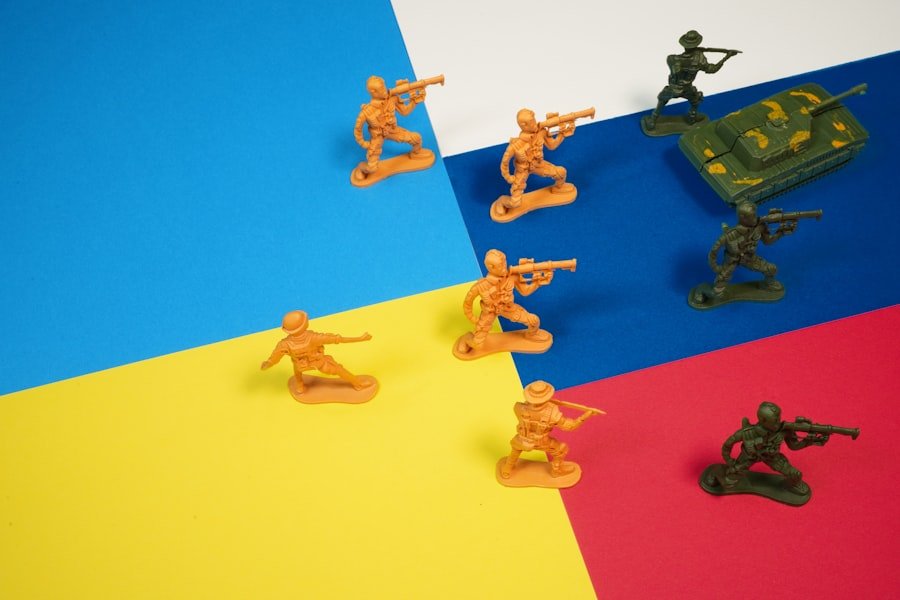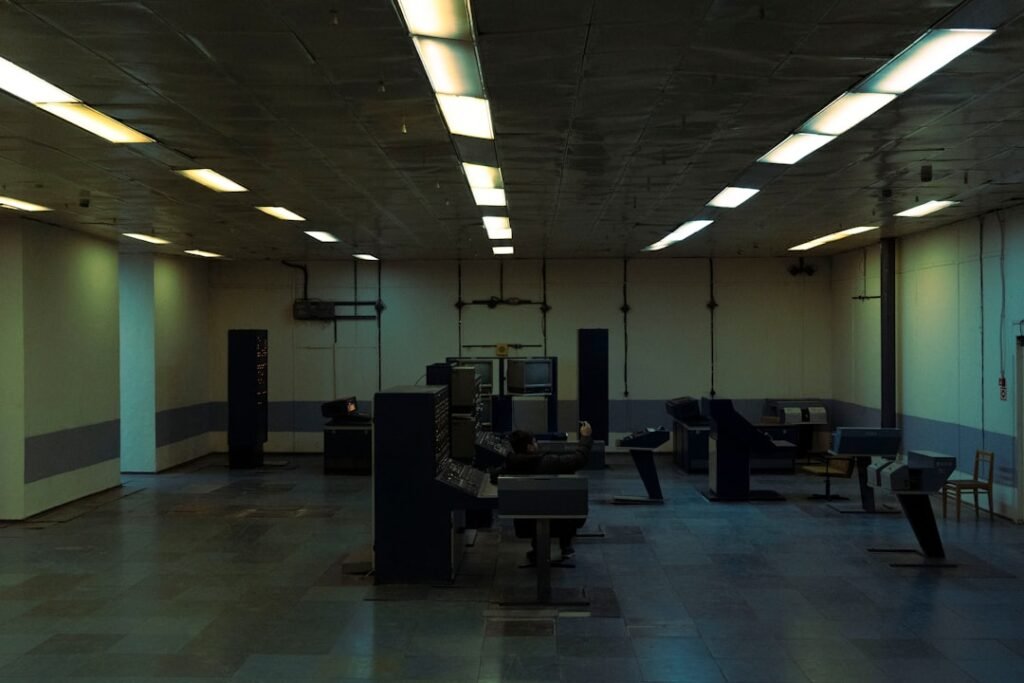Now Reading: Top RPGs with Real-Time Combat: A Gamer’s Guide
-
01
Top RPGs with Real-Time Combat: A Gamer’s Guide
Top RPGs with Real-Time Combat: A Gamer’s Guide

As a passionate gamer, I have always been drawn to the immersive worlds and intricate narratives that role-playing games (RPGs) offer. Among the various sub-genres within RPGs, real-time combat has captured my attention like no other. The thrill of engaging in fast-paced battles, where every second counts, creates an exhilarating experience that keeps me on the edge of my seat.
Real-time combat RPGs blend storytelling with action, allowing players to not only develop their characters but also to engage in dynamic combat scenarios that require quick reflexes and strategic thinking. In these games, the stakes are high, and the adrenaline rush is palpable. Unlike traditional turn-based systems, where players take turns to execute their moves, real-time combat demands constant engagement.
I find myself fully immersed in the action, dodging attacks, executing combos, and coordinating with teammates in multiplayer settings. This genre has evolved significantly over the years, and I am excited to explore its history, appeal, and future potential.
Key Takeaways
- Real-time combat RPGs offer a dynamic and immersive gaming experience, allowing players to engage in fast-paced battles in real time.
- The history of real-time combat in RPGs dates back to the early days of video gaming, with the evolution of technology and game design shaping its development over the years.
- The appeal of real-time combat for gamers lies in the adrenaline-pumping action, strategic decision-making, and the ability to test their skills in a live combat environment.
- Some of the best real-time combat RPGs of all time include titles like “The Witcher 3: Wild Hunt,” “Dark Souls,” “Bloodborne,” “Final Fantasy XV,” and “Kingdom Hearts.”
- Real-time combat differs from turn-based combat by requiring quick reflexes, real-time decision-making, and a focus on action rather than strategic planning.
The History of Real-Time Combat in RPGs
The Advent of 3D Graphics and Sophisticated Game Engines
As technology advanced, so did the complexity of real-time combat systems. The introduction of 3D graphics and more sophisticated game engines allowed developers to create richer environments and more fluid combat mechanics. In the late 1990s and early 2000s, games like “Final Fantasy VII” and “The Elder Scrolls III: Morrowind” began to push the boundaries of real-time combat.
The Emergence of Hybrid Systems
I recall being captivated by the seamless integration of action and storytelling in these titles. They paved the way for future innovations, leading to the emergence of hybrid systems that combined real-time and turn-based elements. As I delved deeper into this genre, I witnessed how developers experimented with different mechanics, ultimately shaping the landscape of real-time combat RPGs as we know them today.
A New Era of Real-Time Combat RPGs
The Appeal of Real-Time Combat for Gamers

What draws me to real-time combat RPGs is the sense of immediacy they provide. The thrill of engaging in battles where my reflexes and decision-making skills are put to the test is unmatched. Unlike turn-based games, where I can take my time to strategize, real-time combat requires me to think on my feet.
This dynamic gameplay keeps me engaged and invested in every encounter, as I must adapt to my opponents’ movements and tactics in real time. Moreover, the fast-paced nature of real-time combat fosters a sense of camaraderie when playing with friends or online teammates. Coordinating attacks and executing strategies together creates a shared experience that enhances the overall enjoyment of the game.
I find that these moments of teamwork not only strengthen my bonds with fellow gamers but also elevate the excitement of each battle. The combination of action, strategy, and social interaction makes real-time combat RPGs an appealing choice for many players, including myself.
The Best Real-Time Combat RPGs of All Time
As I reflect on my gaming journey, several titles stand out as exemplary representations of real-time combat RPGs. One such game is “Dark Souls,” which revolutionized the genre with its challenging gameplay and intricate world design. The sense of accomplishment I felt after defeating a particularly tough boss was unparalleled.
The game’s emphasis on timing and precision made every encounter feel meaningful and rewarding.
” This game masterfully combines storytelling with real-time combat mechanics, allowing me to immerse myself in Geralt’s world while engaging in thrilling battles against various foes. The fluidity of the combat system, coupled with a rich narrative, makes it one of my all-time favorites.
Additionally, “Monster Hunter: World” deserves mention for its cooperative gameplay and epic monster battles that require teamwork and strategy.
How Real-Time Combat Differs from Turn-Based Combat
Understanding the differences between real-time and turn-based combat has deepened my appreciation for both styles. In turn-based systems, players take turns executing actions, allowing for careful planning and strategy formulation. While this can be enjoyable in its own right, I often find myself craving the intensity that real-time combat offers.
The immediacy of real-time battles forces me to react quickly and adapt my strategies on the fly. In contrast, real-time combat emphasizes reflexes and quick decision-making.
This heightened level of engagement creates a sense of urgency that keeps me invested in each encounter. While turn-based games allow for a more methodical approach, real-time combat immerses me in a whirlwind of action that feels exhilarating and rewarding.
Tips and Strategies for Mastering Real-Time Combat RPGs

As I continue to hone my skills in real-time combat RPGs, I’ve discovered several tips and strategies that have significantly improved my gameplay. First and foremost, mastering the controls is essential. Familiarizing myself with the game’s mechanics allows me to execute combos and special moves seamlessly during battles.
I often spend time in practice modes or tutorials to refine my skills before diving into more challenging encounters. Another crucial aspect is understanding enemy patterns. By observing how foes behave during combat, I can anticipate their attacks and respond accordingly.
This knowledge not only helps me avoid damage but also allows me to exploit weaknesses for maximum effectiveness. Additionally, I’ve learned the importance of positioning; staying aware of my surroundings can mean the difference between victory and defeat.
The Evolution of Real-Time Combat in RPGs
The evolution of real-time combat in RPGs has been nothing short of remarkable. From its humble beginnings in early titles to the complex systems we see today, this genre has undergone significant transformations. As technology has advanced, developers have pushed the boundaries of what is possible in terms of graphics, mechanics, and storytelling.
I’ve witnessed how games have incorporated elements like combo systems, skill trees, and environmental interactions into their combat mechanics. These innovations have added layers of depth to gameplay, allowing for more strategic approaches while maintaining the fast-paced nature that defines real-time combat. As I look back on this evolution, I am excited about what the future holds for this genre.
Real-Time Combat RPGs for Different Platforms
One aspect that excites me about real-time combat RPGs is their availability across various platforms. Whether I’m playing on a console, PC, or mobile device, there are countless options to choose from. On consoles like PlayStation and Xbox, titles such as “Bloodborne” and “Nioh” offer thrilling experiences that showcase the capabilities of modern hardware.
On PC, games like “Path of Exile” provide a deep and engaging experience with extensive customization options for character builds. Meanwhile, mobile platforms have seen a rise in real-time combat RPGs like “Genshin Impact,” which has captivated players worldwide with its stunning visuals and engaging gameplay mechanics. This diversity ensures that no matter where I am or what device I’m using, there’s always a real-time combat RPG waiting for me to dive into.
Real-Time Combat RPGs for Beginners
For those new to real-time combat RPGs, finding an accessible entry point can be crucial for an enjoyable experience. One game that I often recommend is “Final Fantasy
Another excellent choice is “Zelda: Breath of the Wild.” This game combines exploration with real-time combat in a way that feels intuitive and rewarding. The open-world design encourages experimentation with different strategies while allowing players to learn at their own pace. As someone who has navigated this genre for years, I appreciate how these titles cater to beginners while still offering engaging gameplay.
Real-Time Combat RPGs for Advanced Players
For seasoned gamers seeking a challenge in real-time combat RPGs, titles like “Dark Souls” or “Sekiro: Shadows Die Twice” are perfect choices. These games demand precision and mastery over their intricate mechanics while punishing mistakes harshly. As an advanced player myself, I relish the opportunity to test my skills against formidable foes and navigate complex environments.
Additionally, “Monster Hunter: World” offers a unique blend of cooperative gameplay and challenging encounters that require teamwork and strategy among players. The depth of character customization allows for diverse playstyles, making each hunt feel fresh and exciting. For those who thrive on challenge and complexity, these games provide an exhilarating experience that keeps me coming back for more.
The Future of Real-Time Combat in RPGs
As I contemplate the future of real-time combat in RPGs, I am filled with anticipation for what lies ahead. With advancements in technology such as virtual reality (VR) and augmented reality (AR), I envision a new era where immersive experiences redefine how we engage with these games. Imagine stepping into a virtual world where every movement feels tangible—this could revolutionize how we approach combat mechanics.
Moreover, as developers continue to innovate with storytelling techniques and character development within real-time combat frameworks, I believe we will see even richer narratives intertwined with action-packed gameplay. The potential for cross-platform play also excites me; being able to team up with friends regardless of their chosen device could foster a more connected gaming community. In conclusion, real-time combat RPGs have carved out a unique niche within the gaming landscape that resonates deeply with players like myself.
From their historical roots to their current evolution and future potential, these games offer an exhilarating blend of action and storytelling that keeps us engaged for hours on end. Whether I’m battling fierce monsters or exploring vast worlds filled with rich narratives, I know that real-time combat RPGs will continue to be a significant part of my gaming journey for years to come.
If you’re interested in exploring the impact of gaming on mental health, you should check out this article that delves into the topic. Understanding how gaming can affect our mental well-being is crucial, especially when diving into immersive RPGs with real-time combat systems. It’s important to consider the potential benefits and drawbacks of gaming on our mental health while enjoying games like these.
FAQs
What are real-time combat systems in RPGs?
Real-time combat systems in RPGs are gameplay mechanics where battles occur in real-time, with actions taking place immediately without the need for turns or waiting for the opponent to make a move.
What are some popular RPGs with real-time combat systems?
Some popular RPGs with real-time combat systems include “The Witcher 3: Wild Hunt,” “Dark Souls,” “Bloodborne,” “Dragon’s Dogma: Dark Arisen,” “Kingdom Hearts,” and “Monster Hunter: World.”
What are the advantages of real-time combat systems in RPGs?
Real-time combat systems in RPGs offer a more dynamic and fast-paced gameplay experience, allowing players to react quickly to enemy attacks and make split-second decisions during battles. It also adds a sense of urgency and excitement to the gameplay.
Are there any disadvantages to real-time combat systems in RPGs?
Some players may find real-time combat systems in RPGs to be more challenging and less strategic compared to turn-based combat systems. It can also be more demanding in terms of reflexes and hand-eye coordination.
How do real-time combat systems impact the overall gameplay experience in RPGs?
Real-time combat systems can make the gameplay experience more immersive and action-packed, as players are directly involved in the combat and have to rely on their skills and reflexes to succeed in battles. It can also add a layer of complexity to the game’s mechanics and require players to master different combat techniques.



























